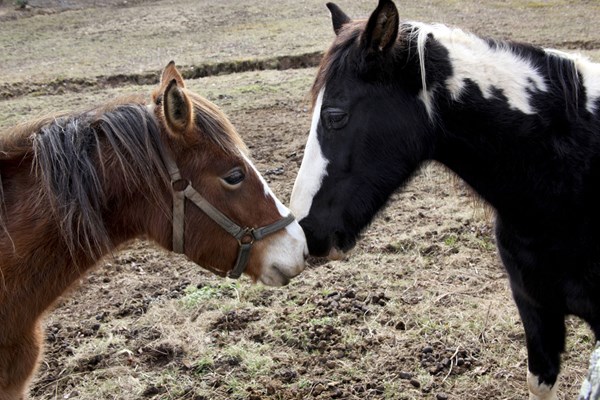
Credit: Thinkstock
North America is experiencing reports of equine herpesvirus myeloencephalopathy (EHM) cases in many states (California, Florida, Kentucky, Maryland, New York, Pennsylvania, Utah and Virginia). Additionally, Europe has been reporting outbreaks of an aggressive strain of the disease. As these cases are manifesting on the cusp of the spring show season, horse owners are encouraged to take time to review information about this disease, consult with their veterinarians for preventative measures, and practice biosecurity protocols at home and while at equine events.
EHM refers to the neurological form of equine herpesvirus type 1 (EHV-1).
EHV-1 is a contagious equine virus that can cause neurological disease, respiratory disease, newborn death and abortion. EHV-1 is most commonly spread through horse-to-horse contact or when horses share water or feed pails, tack or other tools.
Horses positive for EHV-1, and which show neurological signs such as incoordination and hind-end weakness, are considered positive for EHM.
EHM is often fatal and those that make a rare recovery will likely face long-term neurologic problems.
If an owner suspects a horse has EHV-1, he or she should contact a veterinarian immediately and isolate the affected horse. The veterinarian can take a nasal swab or blood sample to test for EHV-1.
Vaccinations are available to control the respiratory and abortion manifestations of EHV-1. Current vaccines do not reliably prevent development of EHM.
As with any contagious virus, practicing biosecurity to limit and prevent the spread of the disease is critical. This includes (but is not limited to):
- Not entering or leaving a facility where a horse has tested positive for EHV-1 or EHM.
- Keeping horses home if showing signs of illness.
- Isolating horses for a minimum of 21 days after returning from a show or event and closely monitoring them for fever, respiratory distress or neurologic signs. The same vigilance should be used for new horses brought into a facility.
- Cleaning and disinfecting equipment, feed items, tack and other tools frequently used; EHV-1 can be killed with many common disinfectants.
- Practicing good hygiene (e.g. hand washing) and refraining from sharing equipment, tack, feed items and tools among horses not housed together.
In Minnesota, EHM is a reportable disease, therefore EHM-positive and -exposed horses must be quarantined as outlined in the Minnesota Board of Animal Health (BAH) EHM control plan. Once reported, the BAH will work with the referring veterinarian and horse owner to carry out the necessary testing and observation protocols before the quarantine can be released. Additionally, the BAH is required to post the address of farms with confirmed EHM-positive cases as well as events the horse(s) attended while contagious, until the quarantine has expired.
For more information on EHV-1 and EHM, visit:
- UMN Extension
- MN Board of Animal Health
- American Association of Equine Practitioners (AAEP)
- USDA Animal and Plant Health Inspection Service (APHIS)
For more information on biosecurity, visit:
To stay up-to-date on equine disease outbreaks in the U.S., visit the Equine Disease Communication Center (EDCC). Horse owners are encouraged to check the EDCC, or sign-up for e-mail alerts, before traveling with horses.
This press release was authored by the UMN Extension and Minnesota Board of Animal Health.


